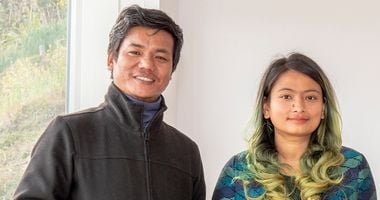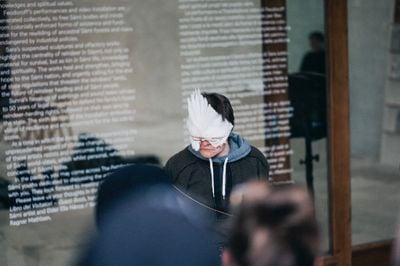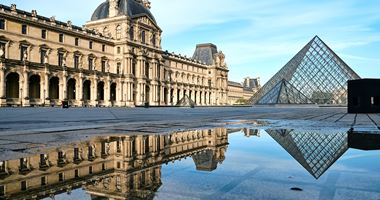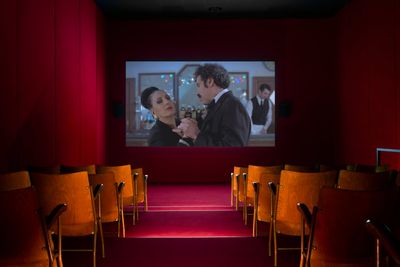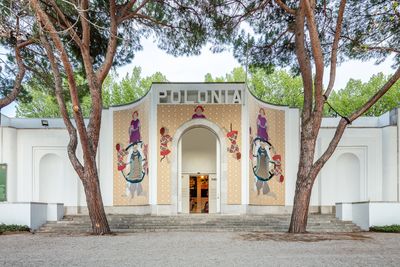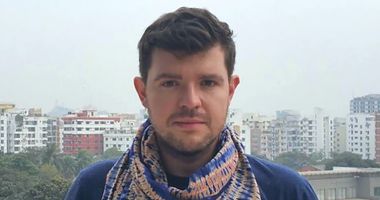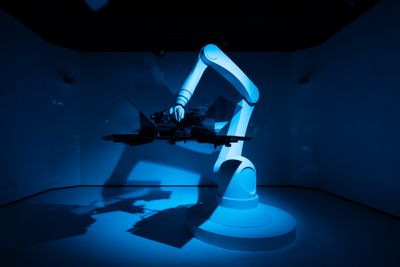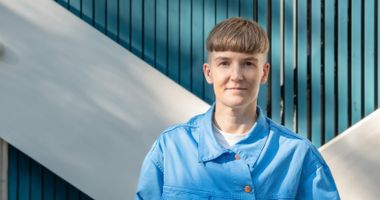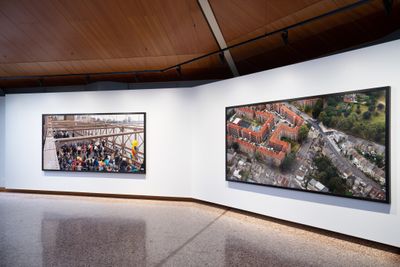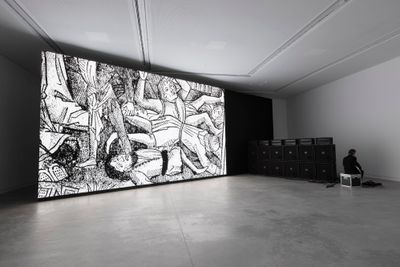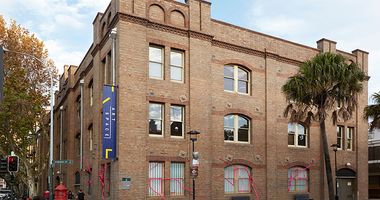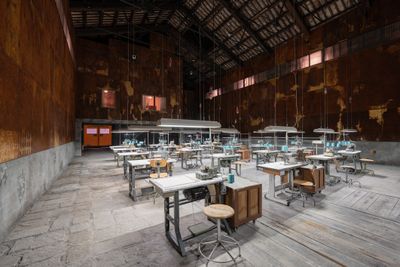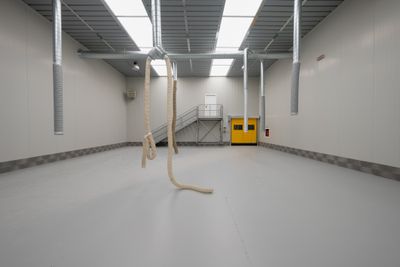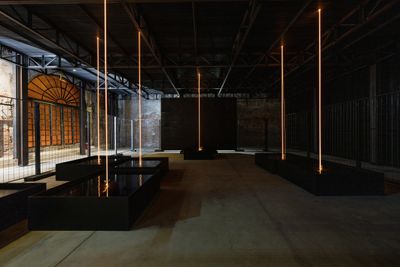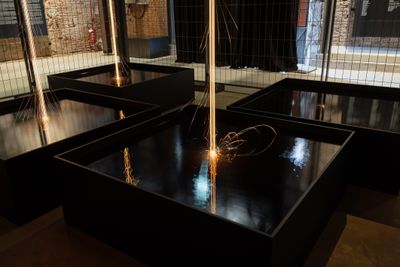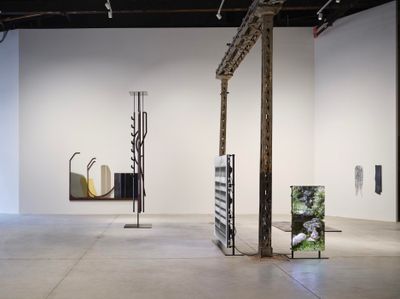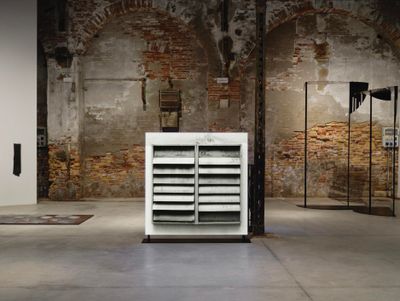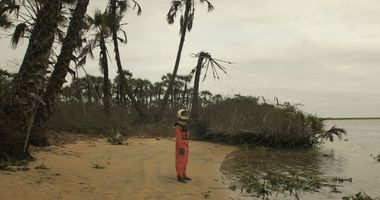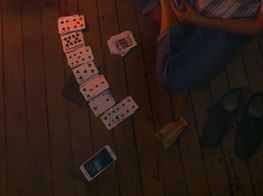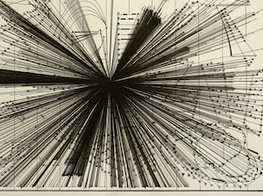Venice Biennale Pavilion Highlights: Arsenale and Giardini
Reporting from the 59th Venice Biennale, Ocula Magazine contributor Mohammad Salemy and editor Stephanie Bailey review some of this year's national pavilion highlights at the Arsenale and Giardini.
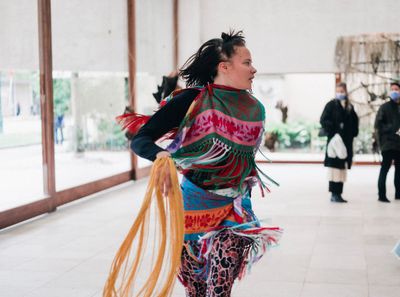
Pauliina Feodoroff, Matriarchy (2022). Exhibition view: The Sámi Pavilion, 59th International Art Exhibition – La Biennale di Venezia, The Milk of Dreams, Venice (23 April–27 November 2022). Courtesy OCA. Photo: Michael Miller.
Giardini
The Sámi Pavilion
Pauliina Feodoroff, Máret Ánne Sara, and Anders Sunna
Giardini, Sestiere Castello, 30122
Every time I passed the Sámi Pavilion, a crowd was gathered around the building. This is a live and active space that draws and welcomes people in; where material practice becomes a flow of expressions, configurations, and connections accumulating around the works of Sámi artists Pauliina Feodoroff, Máret Ánne Sara, and Anders Sunna.
Of course, the space helps. The Nordic Pavilion, designed by Sverre Fehn in 1962, is a minimalist, open, glass-and-stone walled showroom whose stairs, which angle down from the ground above, create a modernist theatrical setting that seems to have been made for this moment.
Organised by Office for Contemporary Art Norway with co-commissioners Moderna Museet, Museum of Contemporary Art Kiasma, and the Finnish National Gallery in Helsinki, Finland, this pavilion is a historic occasion.
The Sámi are an Indigenous community that extends from the Nordic countries into Russia's Kola Peninsula, who have suffered generations of persecution at the hands of nation-states and empires alike. For the Nordic Pavilion to be transformed into a Sámi one points to the great strides that have been made in a centuries-old struggle.
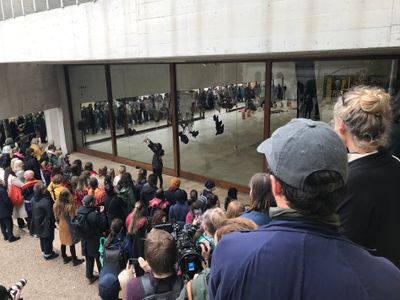
A particular highlight of the rich programme of events organised in and around the pavilion was a performance by young Sámi musicians invited by the Riddu Riđđu festival for a gala celebration. Their mind-blowing repertoire included a song they introduced with the Queen of Norway sitting front row and centre—a tribute to a Sámi hero who was beheaded by the Norwegian state. SB
French Pavilion
Zineb Sedira, Dreams have no titles
Giardini, Sestiere Castello, 30122
Coinciding with the 60th anniversary of Algerian independence, this year's exhibition at the French Pavilion, curated by Yasmina Reggad, Sam Bardaouil, and Till Fellrath, showcases French-Algerian artist Zineb Sedira and her work, Dreams have no titles (2022).
Created for this year's Biennale, the work consists of a series of isolated film sets, lit theatrically and dressed with furniture, books, and other props, recalling the artist's life growing up in an Algerian family in Paris, at once autobiographical and inspired by movies produced during her upbringing.
These films were mainly anticolonial co-productions between Algerian, French, and Italian filmmakers of the 1960s and 70s, reproduced and juxtaposed in the pavilion's screening room with a voiceover recounting the story of Sedira and her family's life.
Equally drawing from Ettore Scola's film The Ball (1983), which the artist uses to mirror a real-life ball scene in the middle of the exhibition, Sedira's work weaves a critical interpretation of her upbringing and Algerian heritage, that resonates with a genuine conceptualisation of post-colonialism. MS
Polish Pavilion
Małgorzata Mirga-Tas, Re-enchanting the World
Giardini, Sestiere Castello, 30122
The Polish Pavilion for the 59th Venice Biennale, titled Re-enchanting the World, presents the work of the Romani-Polish artist Małgorzata Mirga-Tas—significantly, the first time a Romani artist has been featured in the history of the Biennale.
Taking inspiration from the frescoes of the Renaissance Palazzo Schifanoia in Ferrara, Mirga-Tas explores the myths and cyclicality of Romani life, creating 'frescoes' made from pieces of wardrobe and used fabric worn by her community.
The artist's depiction of Romani life is presented from a historical, contemporary, and autobiographical perspective, reproducing the symbolic order of the Schifanoia frescoes, adding layers of significance to her experience as a minority artist in Poland.
By taking the anti-Roma signifiers of traditional European culture and turning them into a celebration of her heritage, Mirga-Tas' work evokes Aby Warburg's idea of the nachleben of images—their 'survival' in a specific context and time after their disappearance.
Returning to the title of the exhibition, the same concept connects Mirga-Tas' practice to the feminist theories of Silvia Federici about the 're-enchantment of the world'. A serious contender for the Golden Lion, the Polish Pavilion this year is curated by Wojciech Szymański and Joanna Warsza. MS
Romanian Pavilion
Adina Pintilie, You Are Another Me—A Cathedral of the Body
Giardini, Sestiere Castello, 30122
You Are Another Me—A Cathedral of the Body, Adina Pintilie's contribution to the Romanian Pavilion with curators Cosmin Costinaș and Viktor Neumann, is as great as everyone says.
A continuation of Pintilie's Touch Me Not I (2018), which explored the intensities of desire, this deconstructed documentary spends time with three couples, offering audiences an intimate insight into their relationships with their bodies and each other.
In a dark room, with walls covered in reflective silver, lines of screens snake through the space, creating pathways to navigate. Each screen shows a different angle of the scene being transmitted; voices often overlap depending on where you stand.
One couple that features is Grit Uhlemann and Christian Bayerlein, who appear in Touch Me Not I. Bayerlein, a web developer and activist, has a severe disability, while Uhlemann is able-bodied. Pintilie takes great care in upholding the intimacy of their union as it unfolds on screen.
During the preview, both Uhlemann and Bayerlein were among the audience at one screening, staying to the end and meandering through the space with everyone else, sharing a personal experience. SB
Canadian Pavilion
Stan Douglas, 2011 ≠ 1848
Giardini, 30122 and Magazzini del Sale, Dorsoduro, 266, 30123
The Canadian Pavilion, curated by Reid Shier and presenting the works of Stan Douglas, is a photographic and media installation titled 2011 ≠ 1848. The work is divided into two parts: one in the Giardini, at the actual Canadian Pavilion, and the other in the Magazzini del Sale, in the Venetian neighbourhood of Dorsoduro.
The Giardini exhibition establishes a non-linear link between the social unrest of 2011 and the 1848 revolutions in Europe, consisting of a group of four photos documenting demonstrations and riots unresolved with their aftermath, taken in specific moments during 2011, in Tunis, London, New York, and Vancouver.
In the second exhibition at the Magazzini del Sale, two video performances, of a Cairo Mahraganat rapper and a London Grime MC, are juxtaposed as a call and response, which might look spontaneous while being carefully photographed by the artist in the two locations.
Through music and the depiction of revolts in the making, Douglas creates a backdrop for the conceptual framework taken from Karl Marx's 18th Brumaire of Louis Bonaparte (1852) about how revolts begin as tragedy and end up as farce. The farce of today's world is determined by the outcome of social revolts, which, in the exhibition is continuously interacting with their significance and posthumous interpretation. MS
Australia Pavilion
Marco Fusinato, DESASTRES
Giardini, Sestiere Castello, 30122
It's easy to forget that art is not only an ocular experience, which is why the term visual culture demands to be rethought, and Marco Fusinato's monumental sound installation DESASTRES (2022) is just one way of navigating that fact.
A giant, freestanding L.E.D. wall reaching to the ceiling cuts through the space diagonally, meeting another wall of speakers and amps connected to an electric guitar. The instrument's sounds form the tempo to which black-and-white images flash and linger on screen, apparently sometimes up to 60 per second.
This is an all-encompassing work, also viewable on Instagram and desastresdesastres.com; its images seem to pull from diverse sources—from a cloudy sky to close-up of a brick wall, and war. If you close your eyes, you technically hear the image by dint of its response to its sonic charge. The sound of the guitar is so awesome and loud that it vibrates through the body; a sensory callback.
People either love or hate this pavilion, I was told, curated by Artspace Sydney's inimitable Alexie Glass-Kantor. At least they felt something so strongly as to articulate a thought, which echoes Fusinato's original intent: 'My idea of activating the audience is to remind them that they are alive. That they have a pulse.' SB
Italian Pavilion
Gian Maria Tosatti, History of Night and Destiny of Comets
Tese delle Vergini, Arsenale, 30122
In the post-pandemic suspense leading to this year's Biennale, the Italian Pavilion at the Arsenale is perhaps one of the most awaited surprises. Curated by Eugenio Viola and showcasing the art of Gian Maria Tosatti, History of Night and Destiny of Comets (2022) is a site-specific installation that critically engages present and past relations between the human species and the 'inorganic body' of nature.
The Pavilion utilises one of the large shipyards along the Arsenale to re-create an Italian garment factory from the Italian post-war economic miracle, divided into rooms interfaced by intentionally squeaking doors and sets of stairs leading visitors to the two floors of the installation.
All physical details—machinery, old industrial tools, lighting—are meant to convey a sense of the path that industrial and capitalist societies have forced upon humanity and its broken future promises.
This ethical worldview is further underscored by the spatial division of the installation: while the shift from the first to the second space symbolises the rise and fall of Italian industrialisation, it also highlights how human functionality gets lost in the abandoned space, creating an uncanny vision of a once-operating space losing its function.
In the pitch-dark last room, water floods and takes up space, creating a dark sea that crashes along the loading ramp of the factory. The only light consists of a swarm of fireflies on the surface of the water, echoing the impending ecological catastrophe the world faces . MS
Malta Pavilion
Arcangelo Sassolino, Diplomazija Astuta
Artiglierie, Arsenale, 30122
I recently read how the American artist Margaret Wharton said she entered art through welding, having become enthralled by the steel yards she would walk past on her way to work. Seeing Arcangelo Sassolino's installation Diplomazija Aastuta (2022), or Cunning Diplomacy, I can relate.
In a black box, a caged area at the centre of the space hosts seven black, square metallic pools below, into which molten steel drips from above. Curated by Keith Sciberras and Jeffrey Uslip, the installation is a distillation of Caravaggio's renowned altarpiece housed in the Oratory of St. John's Co-Cathedral in Valletta, The Beheading of Saint John the Baptist (1608), which the artist painted while spending some time hiding on the island.
That beheading is enacted, it seems, in the very process that makes this spectacular fountain possible. Induction technology using magnets melts 400 pounds of steel per day, in the form of coils, which produce the drips that fall from the ceiling—a beheading ad infinitum, and also maybe resurrection. (The steel is reused.)
One of the more beautiful parts of the installation is not just how entranced people become by it, but for the lights that emerge from the ceiling just before the steel begins to fall—their metallic shape, like spotlights you'd find in someone's home—forged for flames. SB
Irish Pavilion
Niamh O'Malley, Gather
Arsenale, 30122
The Irish Pavilion, curated by Cliodhna Shaffrey and Michael Hill of Temple Bar Gallery, shows Niamh O'Malley's work Gather (2022), made for the Biennale.
The installation features a series of estranged objects carved from different materials, including limestone, aluminium, foiled glass, steel, and beech, and two screens at the centre of the pavilion, investigating the perceptive details of objects and movements in a gathered space.
Central to the installation are the two screens, showcasing the flapping louvers of a vent and a crow wandering in a domestic-like pond. The movements they convey lead visitors to recontextualise their position against the rough surfaces of the Arsenale.
O'Malley's art inquires about our post-pandemic relationship to seemingly domestic objects, while inviting us to appreciate the communal, inclusive aspect inherent to the material quality of the objects themselves. MS —[O]





